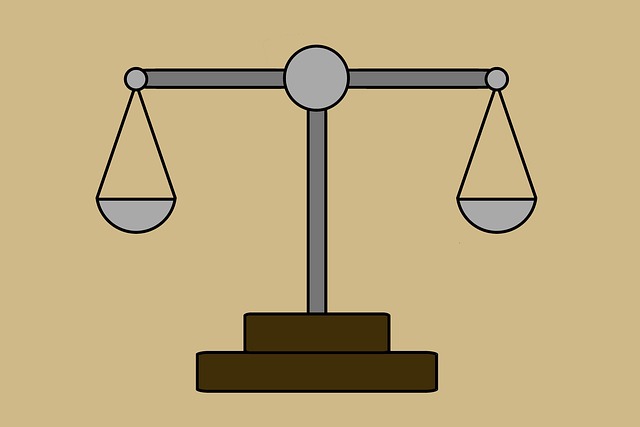Securities class actions provide a powerful legal mechanism for investors affected by partnership disagreements or corporate misconduct, enabling collective justice and compensation for losses. These disputes often arise from strategic conflicts, power imbalances, and financial differences within investment partnerships, especially in complex financial markets. Understanding the procedural landscape of securities class actions is crucial; it involves aggregating claims, fact-finding, legal research, discovery, and potential settlements or trials. Skilled attorneys specialize in navigating this process, advocating for investors' interests. Preventative measures like clear partnership agreements, open communication, and robust white-collar defense strategies are essential to mitigate risks and prevent disagreements, addressing common causes such as misaligned interests, risk assessment discrepancies, and strategic differences through integrated dispute resolution processes.
Securities class actions, a powerful tool for investors, represent collective legal efforts to hold entities accountable for misconduct. This article navigates the intricate world of securities class actions, offering an in-depth look at their significance and impact on financial markets. We explore common causes behind partnership disagreements, such as breach of fiduciary duty and fraud, which often spark these legal battles. By understanding the legal landscape and implementing effective risk mitigation strategies, market participants can forge stronger partnerships and minimize disputes.
- Understanding Securities Class Actions: An Overview
- Common Causes of Partnership Disagreements in Financial Markets
- The Legal Landscape: How Class Actions are Filed and Pursued
- Strategies for Mitigating Risks and Preventing Disputes
Understanding Securities Class Actions: An Overview

Securities class actions are a significant legal mechanism for investors who have suffered losses due to corporate misconduct or violations of securities laws. These cases involve a group of individuals, known as a class, who have incurred damages from a common source. Understanding securities class actions is crucial when addressing the Common Causes of Partnership Disagreements in investment partnerships, which often include white-collar and economic crimes.
By consolidating claims into one lawsuit, class actions aim to achieve extraordinary results for affected investors. This approach has proven successful in securing unprecedented track records of compensation for those harmed by fraudulent activities or breaches of fiduciary duty. Through these lawsuits, investors can seek redress for losses, receive restitution, and hold accountable the parties responsible for their misconduct.
Common Causes of Partnership Disagreements in Financial Markets

Partnerships within financial markets, especially those involved in complex transactions and high-stakes investments, can often face internal tensions and disagreements. These conflicts arise from various factors, each contributing to a breakdown in harmony among partners. One of the primary causes is differing strategic visions; when partners have contrasting ideas about market trends, investment strategies, or risk management, it can lead to significant disputes. For instance, a partner invested in traditional methods might clash with another who favors innovative, high-risk ventures.
Another common trigger for partnership disagreements is unequal power dynamics and decision-making processes. In some cases, a partner’s dominance in terms of capital contribution or expertise can create an imbalance, leading to resentment and disputes over control. Additionally, conflicts may arise from white collar defense strategies, where partners have differing opinions on how to navigate potential legal issues or avoid indictment. Ensuring transparent communication, establishing clear roles, and fostering mutual respect are essential steps in mitigating these common causes of partnership disagreements, ultimately aiming for a complete dismissal of all charges through proactive dispute resolution.
The Legal Landscape: How Class Actions are Filed and Pursued

In the legal realm of securities class actions, a robust understanding of the procedural landscape is paramount. When investors suspect wrongdoing, they can band together to file a class-action lawsuit against entities responsible for market losses. This collective approach leverages the power of numbers, enabling plaintiffs to seek redress for common causes of partnership disagreements within corporations. Such cases often arise from alleged misrepresentations or omissions in securities offerings, corporate fraud, or violations of federal and state laws governing financial markets.
The process begins with an initial complaint, followed by extensive fact-finding and legal research. If the court deems the claims viable, discovery proceedings ensue, where both sides exchange critical evidence. This phase is crucial for building strong cases, often leading to settlements or, in high-stakes cases, jury trials that can significantly impact corporate and individual clients. Effective navigation of this complex landscape requires skilled attorneys well-versed in securities law, ensuring a robust representation of the class’s interests.
Strategies for Mitigating Risks and Preventing Disputes

Preventative measures are key when it comes to mitigating risks and preventing disputes in securities class actions. One effective strategy is to establish clear and comprehensive partnership agreements from the outset. These agreements should outline the roles, responsibilities, and expectations of each party involved, including investors and advisors. By doing so, potential issues related to misaligned interests or unclear obligations can be addressed proactively. Regular communication and transparency between partners are also vital; open dialogue ensures everyone is on the same page and helps avoid misunderstandings that could lead to disputes.
Identifying and addressing common causes of partnership disagreements is essential for achieving extraordinary results in securities class actions. These may include discrepancies in risk assessment, differing strategies for pursuing claims, or conflicts over distribution of compensation. A robust dispute resolution process should be integrated into the partnership structure, encouraging early identification and resolution of issues before they escalate. Moreover, a strong focus on ethical conduct and compliance with legal frameworks in the white collar defense strategy can significantly reduce the risk of disputes arising in the first place.
Securities class actions, driven by identifying and addressing common causes of partnership disagreements in financial markets, are a critical component of maintaining fair and transparent business practices. By understanding the legal landscape surrounding class action filings and employing strategies to mitigate risks, market participants can prevent disputes and ensure sustainable growth. Awareness of these dynamics is essential for all stakeholders, fostering an environment where partnerships thrive and investor confidence remains robust.






